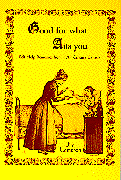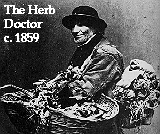

![]()

|
Good for What Ails You: Self-help Remedies from 19th Century Canada.
Jim Cameron. Subject Headings:
Grades 8 and up / Ages 13 and up.
Review by Bob Haxton.
|
Jim Cameron, PhD., is an Associate Professor of Geography at York University with an interest in nineteenth-century Canada. From the books, pamphlets, and newspapers of the period, as well as replies from letters to newspapers and Women's Institutes, he has culled self-help remedies for ailments from nervous disorders to cancer.

Recommended.
Bob Haxton is a teacher-librarian at Prince of Wales Secondary School in Vancouver.
To comment on this title or this review, send mail to cmeditor@mts.net.
![]()
Copyright © 1996 the Manitoba Library Association.
Reproduction for personal use is permitted only if this copyright notice
is maintained. Any other reproduction is prohibited without permission.
Published by
The Manitoba Library Association
ISSN 1201-9364
![]()